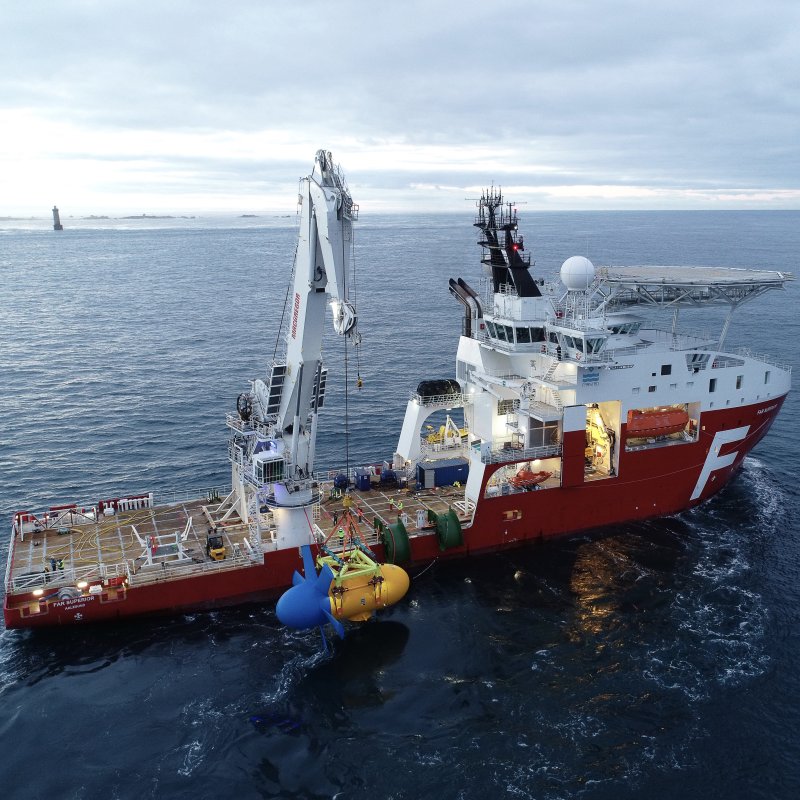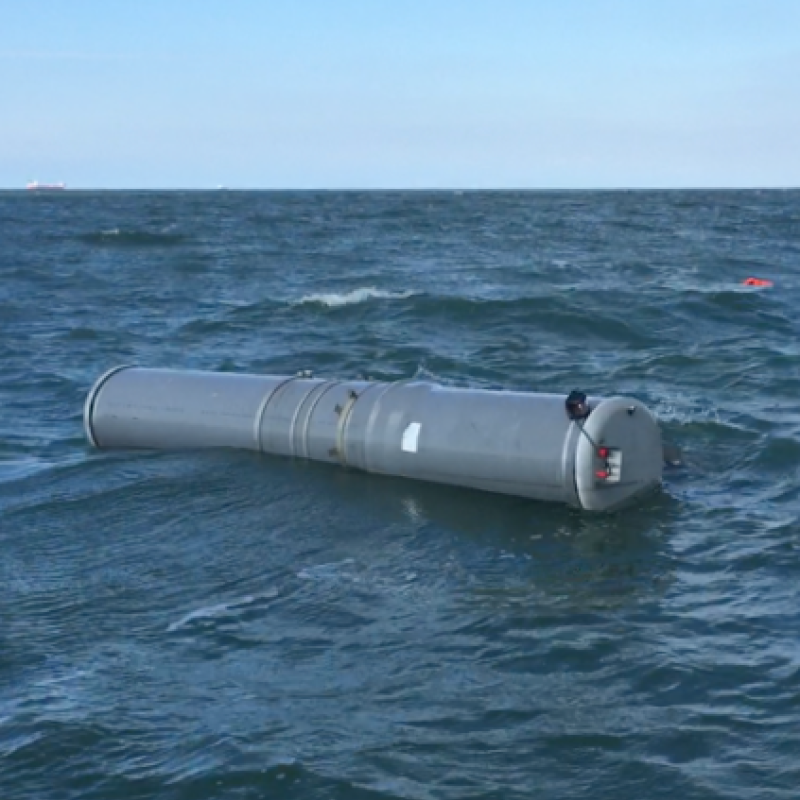Over 700 million people worldwide live in remote communities with no access to traditional energy infrastructure, relying on diesel fuel to generate electricity. Providing baseload renewable electricity, marine energy solutions are an ideal complement to balance small or independent grid systems. With little to no visual impact on the landscape, the touristic value of the environment is preserved. For remote communities, marine energy technologies also offer solutions for the need for air conditioning and fresh water, using deep seawater being brought onshore via the ocean thermal energy conversion (OTEC) process. In many cases, installations make use of the local economy and skills.
Showcases

Tidal power at Ushant Island, France
Tidal and ocean stream turbine developer Sabella redeployed its turbine off Ushant Island in Brittany, France in 2018. On average the turbine provides 15% of the island’s energy needs and this can increase to 50% when required. Sabella plans to deploy 2 additional 0.5 MW turbines to allow Ushant Island to become 100% renewable via a combination of tidal, wind, solar and storage solutions.

Realising tidal energy in the Faroe Islands
In the Faroe Islands, a tidal stream energy project is under development where utility company SEV and technology developer Minesto will install two tidal kites at Vestmannasund in 2020, to establish a grid-connected microgrid system and to optimise performance before further scaling up further tidal energy capacity by Minesto’s technology. This marine energy solution will strengthen Faroe Islands’ transition to 100% renewable by 2030.

First wave farm at Dutch Wadden island Texel
Slow Mill, designed for the moderate wave climate of the North Sea, is equipped with many innovative features to economically harness short and irregular waves. The first Dutch North Sea wave farm is being built off the coast of the Dutch Wadden island Texel to obtain clean energy without horizon pollution.

